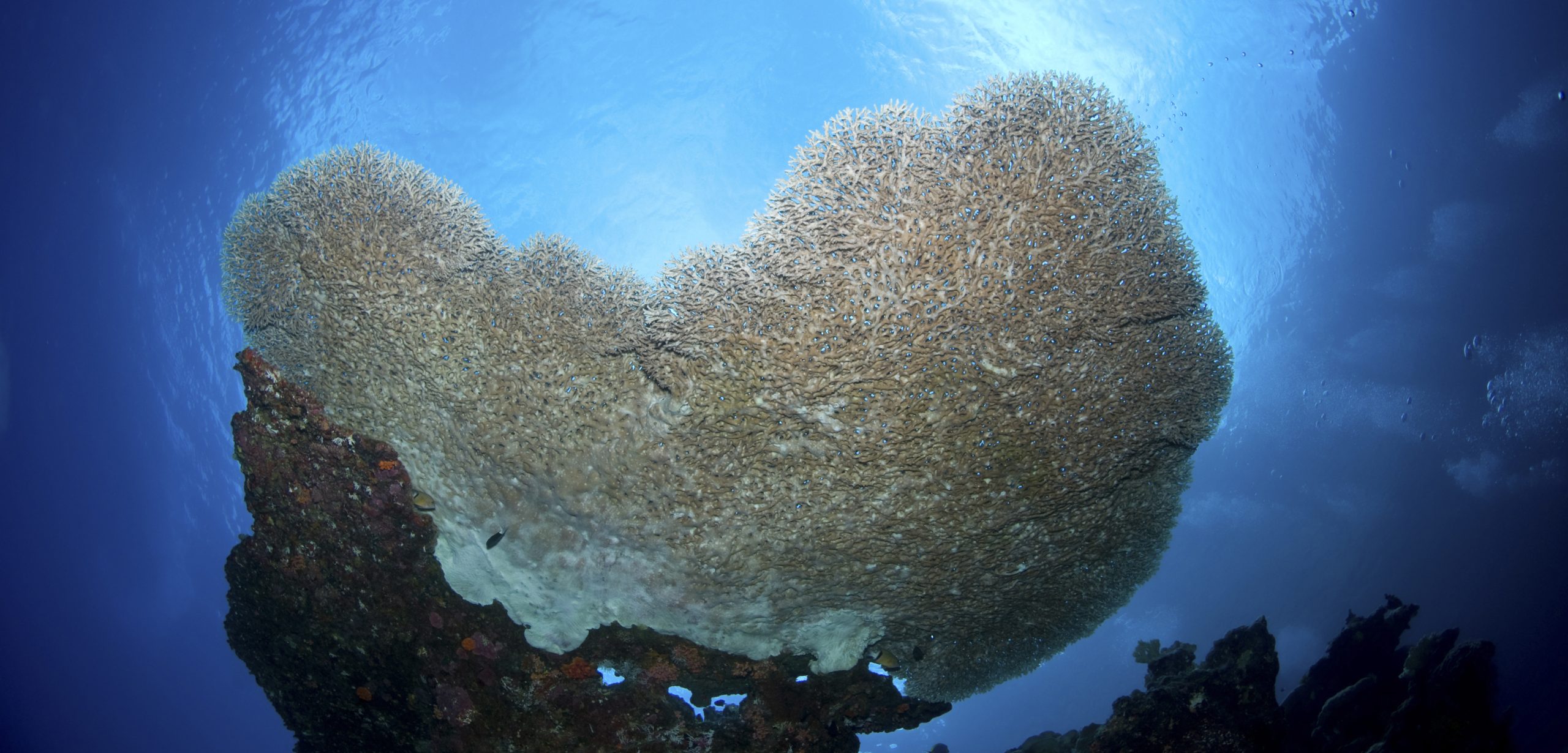Deadly “White Syndrome” Kills Coral, and it’s Spreading
As if coral didn’t have enough to deal with.
Article body copy
When researchers dove into the Indian Ocean off Christmas Island in 2013 to check on coral that had been hard hit by a devastating disease, they found only skeletons.
Five years earlier, the disease—called white syndrome—swept through the coral on Christmas Island, killing, in some cases, up to 96 percent of the Acropora plate coral living in the island’s reefs. When coral ecologist Jean-Paul Hobbs and colleagues saw the skeletons they were shocked. “There had been no recovery,” says Hobbs, the author of a new report on white syndrome.
White syndrome is becoming more common and widespread, says Hobbs. The 2008 Christmas Island outbreak was the first case of white syndrome in the Indian Ocean, but the disease has been ravaging coral since at least 1998, when Australian researchers started systematically tracking its spread. White syndrome has so far affected coral around the world, from the Caribbean and the Philippines to the Great Barrier Reef and the Red Sea. Hobbs is following the killer’s tracks, working to uncover new clues about how the disease operates. He hopes to better understand the threat and, if possible, find a way to stop it.
White syndrome, like so many other syndromes, is a bit of a mystery. The name is an umbrella term for multiple conditions, and there seems to be a range of pathogens to blame: bacteria, protozoans, and parasitic worms have all been linked to the disease.
In an outbreak of white syndrome, a band of white death marches across a coral’s limbs, slowly killing it as the whole thing changes to the color of bone. The disease is different from coral bleaching, which also turns coral white. Coral bleaching stresses the coral and results in more vulnerability to predators, disease, or toxins. Bleaching doesn’t outright kill coral. White syndrome, on the other hand, destroys the coral’s tissue completely, leaving only the denuded skeleton.
White syndrome, says Hobbs, seems to be tearing through just one genus of coral—Acropora—while leaving most others untouched. Acropora corals, however, are the most diverse and abundant corals in the world. They’re prolific reef builders and are the dominant species in Indo-Pacific reefs.
It’s still unknown why Acropora corals are the most susceptible to whatever causes white syndrome. Acropora corals are some of the fastest growing in the world, says Hobbs, but also among the most vulnerable to bleaching and predatory sea stars. Maybe Acropora species invest more of their energy in growth and less in fighting off disease. Maybe they’re just fragile.
Acropora corals are common today, says Hobbs, but he expects they’ll soon disappear from many reefs. If Acropora coral go, so too will the habitats they create with their branching, bushy, and plate-like forms.
Despite its prevalence, Acropora is only one genus of one of the many families of coral. So, since white syndrome only affects a slice of the global coral population, the disease is not as great a threat to coral reefs as climate change and ocean acidification, which impact almost all coral species. But it is the most devastating coral disease in the Indian and Pacific Oceans, says Hobbs.
“Overall, white syndrome is a significant and increasing threat to a small number of corals,” he says. And like coral bleaching, outbreaks of white syndrome also seem to be tied to warm water, meaning we can expect to see more of it with climate change.
Unfortunately, says Hobbs, his findings provide no hints about how to manage or prevent the spread of white syndrome. But he says the disease is a problem we can’t ignore. Without more research and resources to tackle the problem, scientists may find themselves making a lot more dives into graveyards.

